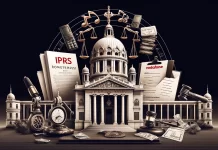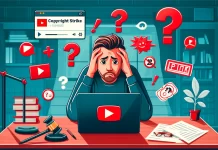I urge you not to draw conclusions without reading this entire post. The intent is not to derail any entity but to have an open discussion on imminent issues daunting the entire media and entertainment industry especially when the lawyers of each side are gearing up for decade long litigations.
In my recent post titled ‘Is the IPRS Tariff Scheme compliant with the requirements of the Copyright Act, 1957 and Copyright Rules, 2013’, I had presented the arguments of Advocate Mr. Shekar Mennon (Founder and Managing Partner- Medialexicon) on the reply issued by him on behalf of his client ‘Hotel Grand Central’ to a demand notice received from IPRS. At IPRMENTLAW, my initiative is to make this a neutral platform for everyone to share their point of view which is why I have posted four different guest interviews till now from members representing different sectors of the industry- ISRA, radio & internet broadcasters, music labels and producers who have all excellently provided their point of view on several of the issues concerning the Copyright Amendment Act, 2012.
I received some valuable comments on some social media platforms from representatives of IPRS and ISRA to my post which is why I deemed it necessary to carry out this follow up post.
I would like to deal with the following issues in this post:
- Government letter dated 28.11.2017 which is a pre-condition for IPRS registration
- Compliance with Rule 56(4) of the Copyright Rules, 2013 read with Section 33 and 33A of the Copyright Act, 1957
- Copyright Board order, 2010- whether applicable or not applicable?
- Licensing vs Royalty Conundrum- Impact of Aditya Pandey judgement
Issue 1: Government letter dated 28.11.2017 which is a pre-condition for IPRS registration-
IPRS was granted registration on November 28, 2017. The certificate mentions the following:
“The registration and the permission hereby granted are subject to the following conditions and liable to be cancelled on non-compliance with or contravention of, any of them, namely-
…iii. That the Copyright Society takes appropriate remedial action with regards to the observations as detailed in letter no. F. No. 07-01/2017- CO. dated 28.11.2017 in the time bound manner and submit a report within 60 days.”
Section 33(3) of the Copyright Act, 1957 requires:
“(3) The Central Government may, having regard to the interests of the authors and other owners of rights under this Act, the interest and convenience of the public and in particular of the groups of persons who are most likely to seek licences in respect of the relevant rights and the ability and professional competence of the applicants, register such association of persons as a copyright society subject to such conditions as may be prescribed:…”
A perusal of the above-mentioned, makes it abundantly clear that the IPRS registration is subject to fulfilment of the condition laid down in the letter dated 28.11.2017. I have not come across any information on what the contents of this letter are. Since 60 days from issuance of the letter have long lapsed, why has no disclosure or statement been made on its compliance? Is this an oversight or a deliberate suppression? We do not have these answers. It would therefore only be fair that IPRS makes a statement of compliance with the said government letter before demanding tariffs from different users.
As pointed out in my earlier post, IPRS website has a disclaimer running that “The new Tariffs as set out have been approved by the Board of Directors /Governing Council of IPRS vide resolution dated 09.03.2018 and will come into effect upon approval by the General Body of IPRS with the EGM to be held imminently. These Tariffs are slated to be effective from 01.04.2018 onward.”
It is likely that these issues will be made available to the public only post the EGM. But until IPRS clarifies this, we have the right to speculate!
Issue 2: Compliance with Rule 56(4) of the Copyright Rules, 2013 read with Section 33 and 33A of the Copyright Act, 1957
Rule 56(4) of the Copyright Rules which deals with Tariff Scheme provides- “While fixing the tariff the copyright society shall follow the guidelines issued by any court or the Board, if any, and may consult the user groups.”
There are two issues to be considered here: (i) consultative process (ii) compliance with a guideline issued by the Court or the Board.
Consultative Process:
As mentioned in my earlier post, a strict interpretation of reading this rule would be that if any guideline is issued by any court or the Board, the copyright society while fixing the tariff shall follow the same. The requirement of consulting the user groups seems optional due to the use of the term ‘may’.
However, the intent behind Rule 56(4) of the Copyright Rules, 2013 read with Section 33 and 33A of the Copyright Act, 1957 suggests a consultative process with the stakeholders.
To buttress the intent, I would like to reproduce some portions from the Standing Committee Report on HRD on the Copyright Amendment Bill, 2010. While taking into account the representations given by various stakeholders on Section 33A of the then proposed Copyright Amendment Bill, 2010, the Committee observed as follows:
“17.7 The Committee, taking into account the viewpoint of both the stakeholders i.e. the copyright societies and the users, observes that there is no denying the fact that the process of fixing tariff by the copyright societies is not transparent. As per the existing system, the copyright societies are free to fix tariffs without any visible basis / criteria. There is no system of broad-based consultations by these societies as is done in other sectors such as telecom, insurance, broadcasting and electricity. The Committee observes that in these sectors, stakeholders are consulted before tariff is fixed and notified. However, such a system is completely lacking in case of copyright societies. As a result, there are instances of arbitrariness, arm twisting and negotiations by these societies.
17.8 The Committee is of the firm view that the proposed amendment will result in the introduction of a system of a transparent formulation of tariff scheme by the collective administrative copyright societies, which will be subject to scrutiny by the Copyright Board on receipt of appeal by the aggrieved party. At the same time, the Committee would like the Department to take note of the concerns of the various stakeholders and provide for a transparent process of tariff fixation by the copyright societies with necessary changes in the relevant rules. The Committee would also take the opportunity to observe that for putting in place a well-defined and balanced tariff scheme, functioning of Copyright Board as well as copyright societies also needs to be regulated, strengthened and made fool-proof so as ensure that all the stakeholders are benefited. The Committee would be giving its recommendations in this regard in the later part of the Report.”
Please note that Rule 56(1) requires the tariff scheme to be framed within three months from the date on which a copyright society has become entitled to commence its copyright business. The timeline for the same therefore expired on February 28, 2018 with respect to IPRS.
So, my question is, was there a consultative process with the stakeholders while determining the tariff scheme as intended by the Act and Rules or was it a unilateral fixation of terms of agreement as has been done by IPRS historically? I am sure many readers would want answers to these questions. Consultative process is essential to avoid unnecessary future disputes and would definitely be a subject matter of litigation in any matter against IPRS on the royalty issue.
There is also an issue of reasonableness of the tariff schemes and the rationale behind the difference between the old and new tariff schemes which in my view should have been explained in the interest of transparency, but that is an issue adjacent to the consultative process issue.
As regards ISRA, I would refrain from commenting at this point of time, as I am not convinced that the constitution of ISRA is in compliance with Section 34 and Section 35 of the Copyright Act, 1957.
(ii) Compliance with a guideline issued by the Court or the Board.
With respect to the second point on this issue as regards to compliance to the guidelines issued by a court or Board, as pointed out by me in my earlier post, to my knowledge, save and expect for the Copyright Board order of 2010 determining the radio royalties at 2%, there is no other Court guideline or order of the Board on fixing the tariff schemes by copyright societies. Therefore, in my view the question of compliance with a Court or Board order (except for radio royalties) does not arise and any party aggrieved with the tariff scheme would need to approach the Appellate Board as provided in Section 33A of the Act.
Issue 3: Copyright Board order, 2010- whether applicable or not applicable?
In 2010, the Copyright Board heard nine applications under Section 31(1) (b) of the Copyright Act, 1957 for grant of compulsory license for broadcast of sound recordings to radio broadcasters. The complainants included M/s Music Broadcast Private Limited, Entertainment Network India Ltd, Radio Mid-Day West India Ltd, Puran Multimedia Pvt. Ltd, Synergy Music Entertainment Ltd, Rajasthan Patrika Pvt. Ltd. The Respondent was Phonographic Performance Ltd. In exercise of powers conferred under section 31(1) (b) of the Copyright Act, 1957, the Copyright Board directed the Registrar of Copyright to grant to the complainants (radio broadcasters) separate licenses for communicating the work recorded in sound recordings in the repertoire, present and future, of the respondent (PPL) to the public by broadcast on revenue sharing basis subject to 2% of net advertisement earnings of each FM radio station accruing from the radio business only for that radio station to be set apart by each complainant for pro rata distribution of compensation to all music providers including the respondents (PPL) in proportion to the music provided by the respective music providers and broadcast by the complainant (radio broadcasters). For arriving at “net advertisement earnings”, all Government and municipal taxes paid, if any, and commission paid towards the procurement of such advertisements to the extent of 15% of such advertisement earnings were to be excluded.
In my earlier post, I mentioned that the tariff schemes of IPRS and PPL do not seem to be in compliance with the CRB order and that the radio broadcasters who have been paying the 2% royalty rates save and except with respect to voluntary licenses entered by them, are likely to dispute these tariff orders (i.e. if they agree to pay royalties to these two copyright societies at all, since radio broadcasters mostly exploit sound recording rights and not performing rights and would therefore dispute IPRS’s authority to grant licenses to them). I had also mentioned that the copyright societies may argue that the 2010 Copyright Board order is not binding on them as it was specifically against PPL and not an order in rem.
I reckon I should have presented my argument more clearly. The representative from IPRS who commented to my post on a social media platform rightly pointed out that the CRB order on Radio was on sound recording and not on underlying works and hence the Registrar had issued the compulsory license only for the PPL repertoire and not for IPRS. I completely agree with the concerned representative’s view and which is why I had mentioned in my post that the copyright societies would argue that the CRB order is not an order in rem and does not apply to them. But my question to the concerned representative was simple- How can the underlying works royalty/ performers royalty be quoted higher than the sound recording royalty? The 2% royalty rate still holds good qua PPL. Then what is the rationale behind asking the radio broadcasters to pay more royalties to IPRS or ISRA compared to what they are paying to PPL for radio broadcasting?
To my knowledge, save and except for Super Cassettes Industries Limited, no other music label was able to obtain a stay order on the CRB Order. SCIL had challenged the Copyright Board Order on the ground that the copyright board does not have jurisdiction under Section 31 to pass an omnibus license and SCIL cannot be subjected to an order where it was not a party and was not granted an opportunity of being heard before the Copyright Board Order was passed and which is a mandate under Section 31(1) of the Copyright Act.
The CRB order was passed in the year 2010 and in my personal view, the order needs to be reevaluated taking into account inflation and other critical factors to make the royalty rate commercially viable for the right-holders. The challenge to the CRB order is still sub-judice. However, until there is another Board or court order overruling the 2010 CRB order, the 2% royalty continues to be the norm followed and any increase in that ought to have been justified. Again, the issue of consultative process seems to lack here.
Since the CRB order does not specifically apply to IPRS or ISRA, the question remains as to whether IPRS and ISRA should take into account the 2% royalty imposed by the CRB order for PPL since there cannot be any possible rationale in quoting higher royalty rates for underlying rights or performers rights over sound recording rights.
Issue 4: Licensing vs royalty conundrum- Impact of Aditya Pandey judgement
The Supreme Court in the matter of International Confederation of Societies of Authors and Composers (CISAC) vs Aditya Pandey & Ors, had upheld the Delhi High Court division bench order which had held that event organizers need not secure a separate license from lyricists and musicians for playing the song in public after it has paid for the broadcasting of the song to the sound recording company. The Court however clarified, that with effect from 21.06.2012, in view of sub-section (10) of Section 19, the assignment of the copyright in the work to make sound recording which does not form part of any cinematograph film, shall not affect the right of the author of the work to claim an equal share of royalties or/and consideration payable for utilization of such work in any form by the plaintiff/respondent.
As could have been expected, this judgement has been analysed and interpreted in myriad ways. One interpretation is that this judgement completely does away with the dual licensing system i.e. if sound recording is being exploited then no separate license is required to be taken with respect to underlying works even post 2012 Amendment and that how royalties would be paid under Section 18 or 19 is not the concern of the party seeking the sound recording license i.e. no separate license is required from IPRS and no royalties payable to authors. Further, since the Act fails to specifically provide which party is required to pay the royalties to the authors and assignees, the onus cannot be put on any one party. The division bench of the Delhi High Court had held in the Aditya Pandey judgement that “Had the intention of Indian legislature been that the owner of a sound recording (derivative work) should not communicate the sound recording to the public without obtaining the prior authorization of the owner of the copyright in literary and musical works (original works) or that 2 permissions had to be obtained, it should have specifically manifested such intention in the Copyright Act, 1957, as has been manifested by the legislature in the United Kingdom in the CDP Act, particularly when CDP Act, 1988 prohibits the owner of copyright in sound recording from communicating the sound recording to the public stood enacted, at the time when provision relating to copyright in sound recording was amended in India in the year 1994. Faced with such situation, it is difficult to accept the stand of IPRS that 2 separate permissions would be required.”
The other interpretation is that the Aditya Pandey judgement was only with respect to the specific dispute between the parties as had arisen in 2006 and does not affect the position post 2012 Amendment. The SC judgement clearly states that the suit was filed in 2006 and the law as existed has to be applied, for the period prior to 21.06.2012. That this judgement does not affect the royalty rights of the authors in any manner and that Section 18 and 19 are to be harmoniously read with Section 33 of the Act which implies that dual licensing would be required for exploitation of songs, one from the sound recording owner and the other from the authors of underlying works. Since royalties are payable only when content is communicated to the public, the entity communicating the work should bear the onus of the royalty payment. For instance, if a platform provider (except cinema theatres in case of exploitation of cinematograph films) is exploiting a song on its platform, it would require to obtain a sound recording license from the sound recording owner such as a music label as well as a license in the underlying works from IPRS (for content of its members).
In the absence of any judgement addressing the issue that separate licenses for underlying works are required post 2012 Amendments, the Aditya Pandey judgement will continue to be relied upon by the parties to suit their interest. In my view the Aditya Pandey judgement was an opportunity missed to bring some clarity on the royalty payments to the authors. However, with IPRS receiving its registration and there being no judicial precedent on this subject post the 2012 Amendment, its chances of getting a ruling supporting the royalty rights of authors seem higher.
Someone recently pointed out to me that the registered copyright societies are Section 8 companies (erstwhile Section 25 of Companies Act, 1956) and the business being conducted by them and proceeds being distributed by them is contrary to the provisions of the Companies Act, 2013 and their Board needs to be looked into as well. I am not a company law expert and do not wish to delve upon these issues. But if these societies are not complying with the provisions of law then the entire fight of Mr. Akhtar on getting royalty payments for authors would be a futile exercise.
There is a pressing need to have a single window licensing process or one umbrella license for ease of entities to run their business. With the current framework it seems like a distant dream. Imagine the plight of a platform provider who has to run around and negotiate separately with different copyright societies, sound recording owners/their agents/ representatives, conduct due diligence of the rights involved and then be thrown with the legal jazz of varied interpretations such as of the Aditya Pandey judgement. One needs to also consider the smaller businesses who do not have the bandwidth to spend crores in the litigation game and who want a simple solution, a one stop destination. There also needs to be speedy redressal of disputes. As was recorded in a recent Delhi High Court ruling, the Appellate Board still does not have its technical members. Its taken them ages to find a Chairperson and make the Board functional, they cannot be taking a couple of more years to start deciding on these pressing issues.
They say that the Indian entertainment industry is one big family, its just that the members of this family are always in dispute finding ways and means to protect the money that comes into their account, whether it is for themselves or the other family members- looks like they take their filmy drama way too seriously.
Image source: here


















